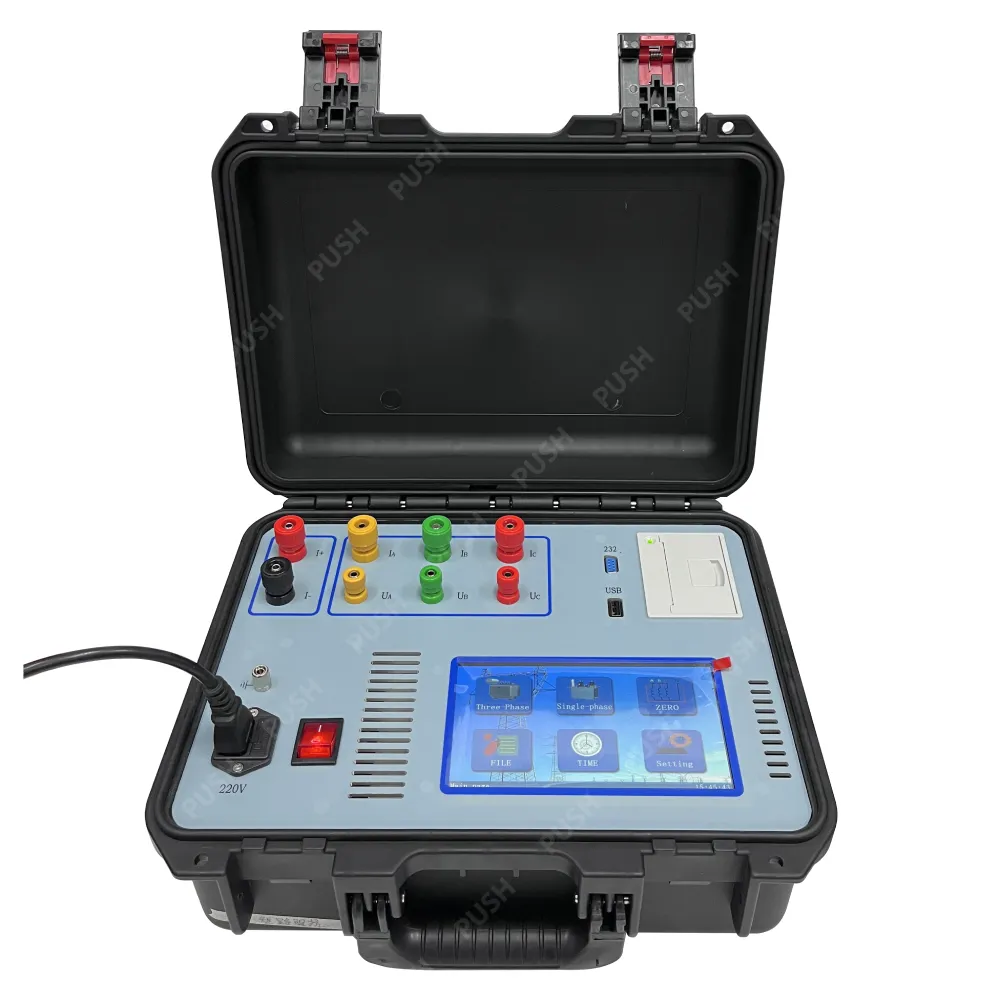 English
English


Measuring Transformer Resistance with Advanced Metering Techniques and Tools
Understanding Transformer Resistance Meters A Comprehensive Overview
In the realm of electrical engineering and maintenance, the accurate measurement of resistance in electrical components is vital for ensuring optimal functioning and longevity. One of the most essential tools for this purpose is the transformer resistance meter. This specialized instrument plays a crucial role in assessing the condition of transformers, which are a backbone of electrical distribution systems. This article aims to provide an in-depth understanding of transformer resistance meters, their functionality, applications, and best practices for usage.
What is a Transformer Resistance Meter?
A transformer resistance meter is an advanced testing device specifically designed to measure the winding resistance of transformers, reactors, and other inductive devices. By performing these measurements, technicians can evaluate the health of the transformer windings, identify potential issues, and mitigate the risks associated with operational failures. This meter helps ensure that the transformer operates within its specified parameters, thereby facilitating reliability and efficiency in electrical systems.
How Does a Transformer Resistance Meter Work?
The operational principle of a transformer resistance meter is straightforward yet effective. The device applies a DC voltage to the transformer windings and measures the resulting current. By using Ohm’s Law (R = V/I), where R is resistance, V is voltage, and I is current, the meter calculates the resistance of the windings. Manufacturer specifications often recommend performing this test under specific temperature conditions, as resistance can vary with temperature changes.
Advanced transformer resistance meters come equipped with features such as automatic temperature compensation, which adjusts the resistance readings based on the measured temperature, ensuring accurate results. Additionally, many of these meters can store data and generate reports, allowing for better analysis and documentation of transformer health over time.
Applications of Transformer Resistance Meters
1. Routine Maintenance Regular measurement of winding resistance can help identify wear and deterioration in transformer components. This proactive approach allows for maintenance before catastrophic failures occur.
2. New Installations Before bringing a transformer into service, resistance measurements validate that it is functioning correctly and within design specifications.
3. Fault Diagnosis Any significant changes in resistance readings can indicate issues such as short circuits, loose connections, or insulation failures, enabling quick diagnostics and repairs.
transformer resistance meter

4. Testing during Overhauls During significant overhauls, having precise resistance measurements can help technicians understand the condition of the transformer and decide on necessary repairs or replacements.
Best Practices for Using a Transformer Resistance Meter
To maximize the effectiveness of a transformer resistance meter, users should follow these best practices
1. Calibration Ensure that the meter is properly calibrated according to the manufacturer’s specifications before each use. Regular calibration enhances measurement accuracy.
2. Safety Precautions Always observe safety protocols when working with electrical systems, including wearing appropriate personal protective equipment (PPE) and ensuring the transformer is de-energized before testing.
3. Consistent Environment Perform tests under consistent temperature conditions. Resistance measurements can be affected by temperature fluctuations, so it is essential to either conduct tests at standard operating temperatures or document ambient conditions during testing.
4. Documentation Keep meticulous records of all measurements, including date, time, and environmental conditions. This data can assist in trend analysis over time and help in predictive maintenance planning.
5. Training Ensure that personnel operating the meter are adequately trained. Understanding how to interpret the readings and troubleshoot common issues is crucial for efficient testing.
Conclusion
In summary, transformer resistance meters are indispensable tools for electrical maintenance and testing. By accurately assessing the winding resistance of transformers, these devices promote reliability, safety, and efficiency in electric power systems. Proper use, adherence to best practices, and comprehensive training are all pivotal in leveraging the full potential of transformer resistance meters, ultimately leading to enhanced performance and lifespan of transformer equipment. As electrical systems continue to evolve, the importance of such testing tools will undoubtedly remain a cornerstone of effective electrical engineering and maintenance strategies.
-
Differences between open cup flash point tester and closed cup flash point testerNewsOct.31,2024
-
The Reliable Load Tap ChangerNewsOct.23,2024
-
The Essential Guide to Hipot TestersNewsOct.23,2024
-
The Digital Insulation TesterNewsOct.23,2024
-
The Best Earth Loop Impedance Tester for SaleNewsOct.23,2024
-
Tan Delta Tester--The Essential Tool for Electrical Insulation TestingNewsOct.23,2024





